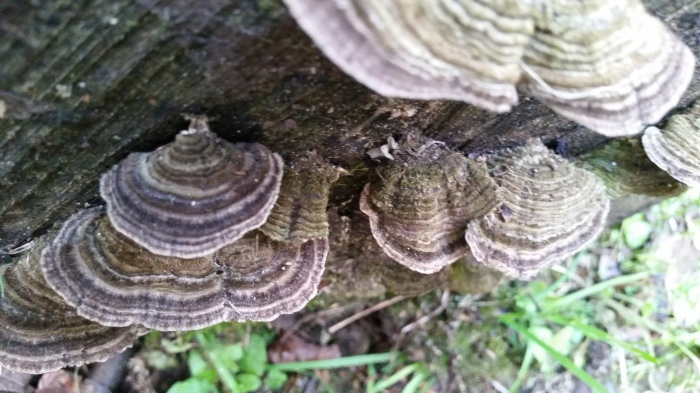
Here in South Louisiana, it feels like our spring has already sprung in mid-February. We have had enough warm weather that some of the plant species here think that spring has arrived. Puxatony Phil’s assertions aside, this warm blast had me outside getting my small yard prepared for a spring/summer garden. In doing so, my son and I were moving some old firewood, and we came across a small flush of Turkey Tail mushrooms growing out of the end of an ash log. To a Turkey Tail mushroom, there’s nothing like a nice piece of ash!
This mushroom isn’t “edible” in the since that you can make a meal out of it, but it definitely isn’t poisonous either. I would consider this little beauty one of the best known medicinal mushrooms around. In fact, this mushroom has such impressive potential in certain areas of medicine that the U.S. Food and Drug Administration (FDA) have conducted clinical trials to test the effectiveness of the venerable Turkey Tail when consumed along with conventional cancer treatments in an attempt to boost their effectiveness. It is one of the most wide spread mushrooms across the United States, and other parts of the world, so it should be pretty easy for someone new to shrooming to spot, and identify.
The Health Benefits are many. It Boosts the Immune System. It is this property that is being investigated for use with cancer patients because of its ability to help fight infections, illnesses, and could potentially be a strong cancer fighting food. There is evidence that suggests that this mushroom is quite effective at aiding the body in fighting the common cold, influenza virus, human papillomavirus (HPV), gingivitis (gum disease), HIV/AIDS, and other forms of virus. Reports also show that it can even aid in digestion.
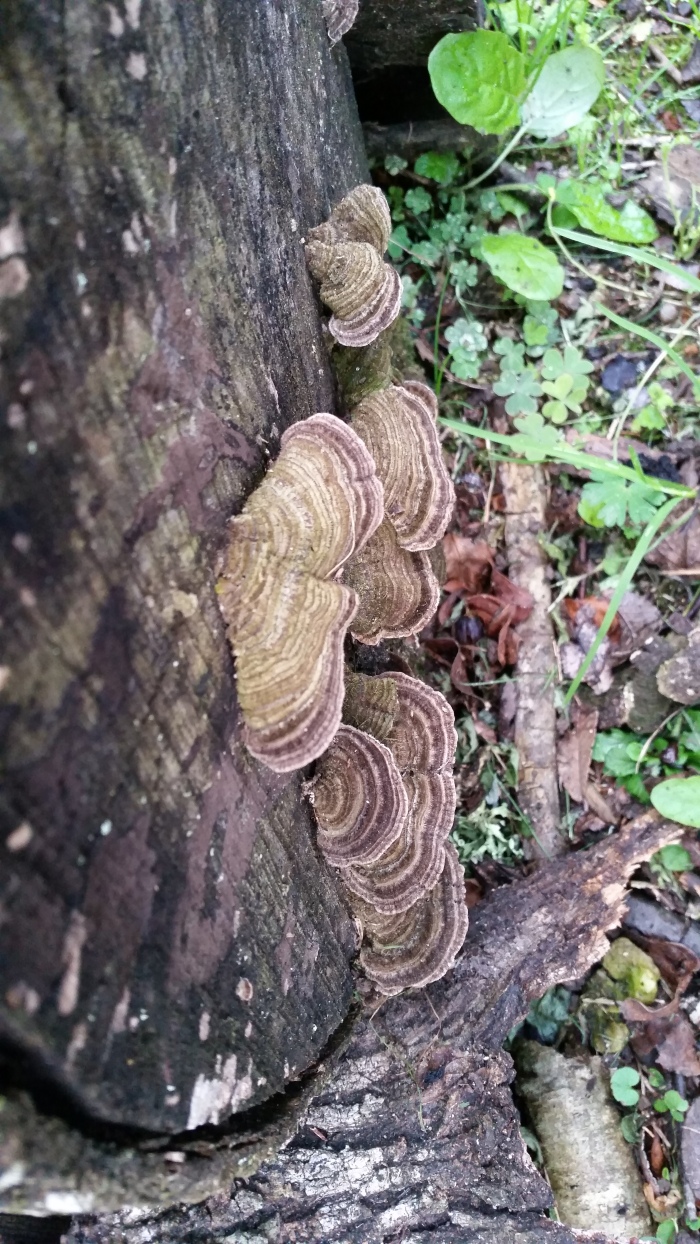
Top View
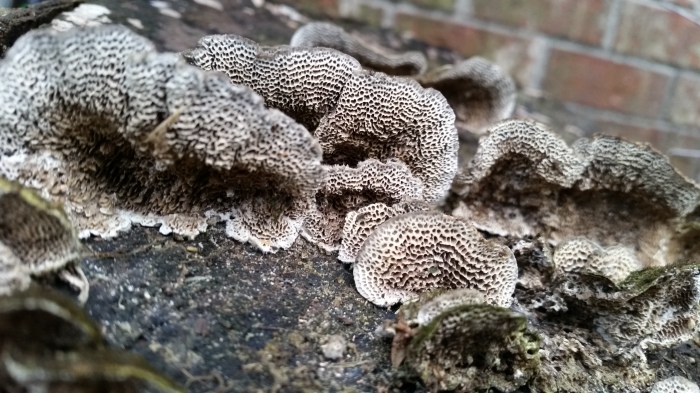
Bottom View
It is easy to see where the common name Turkey Tail came from. The fan of the wild turkey resembles the shelf like appearance of this mushroom’s cap with its concentric color bands mimicking the turkey’s feather coloration. The Japanese call them Kawaratake, which in my world translates roughly to “I don’t freaking speak Japanese.” In China it is known as Yun Zhi (again, I don’t know what that translates to in Chinese).
The scientific name Trametes Versicolor is so named because of this shroom’s tendency to have multiple concentric bands of different colors running around the cap. “Versi” meaning many & “color” you guessed it, means color, so you could read it as Trametes (I don’t know what that means) of several colors. These colors can have a very wide range, and make for an attractive site to behold. They can be any combination of red, rust, brown, tan, white, buff, green or even shades of blue.
The top of the cap has a velvet like, or slightly furry texture, and the entire cap has a pliable, leathery feel. The Turkey Tail is what is known as a Polypore (read as “many pores or holes”) mushroom. As such the underside of the cap is covered in pockmark looking holes from which the fungus spreads its spores in order to reproduce. So, this mushroom does not have a soft or spongy texture, and does not have gills like the edible oyster mushroom, as discussed in a previous post, Oyster Mushrooms.
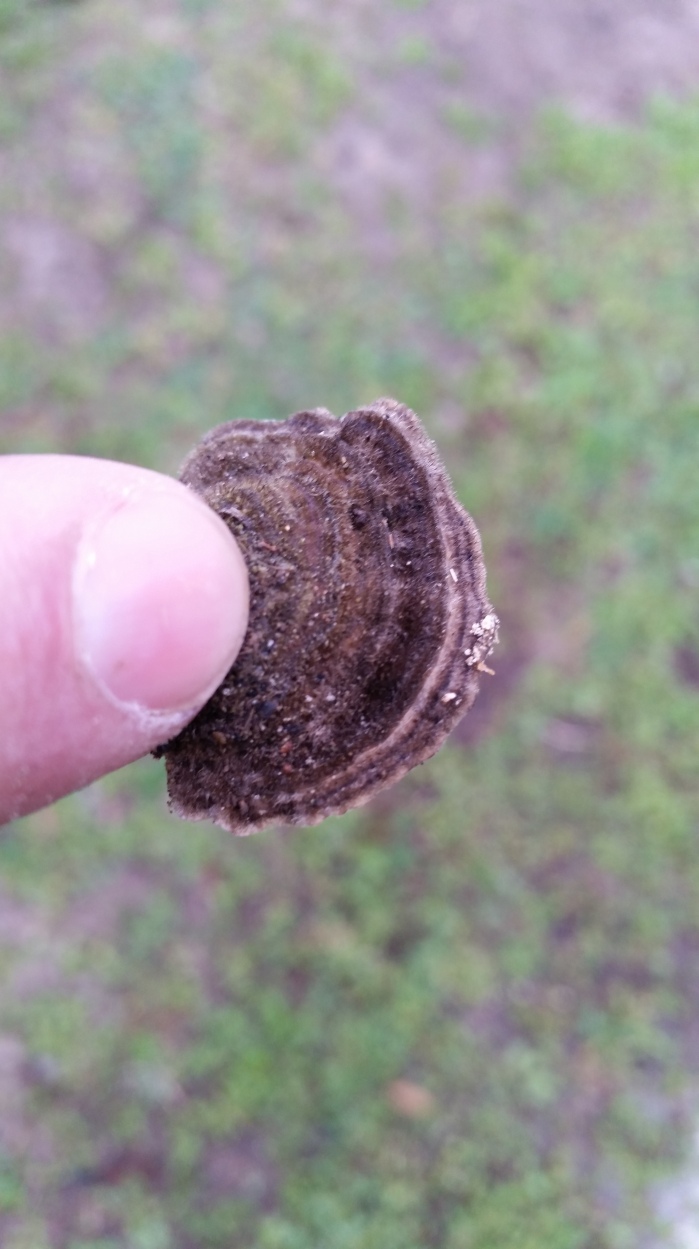
See the velvety fuzz on the top side of the cap.

Here you can see the reason this mushroom is in the Polypore family. See the many small holes on the underside of the cap from which this mushroom spores.
I’m a firm believer that God provides things in nature at times when the human body may require it. Such as fatty tree nuts in the fall, or plants and mycelium that aid the body in fighting off the viruses or harmful bacteria or mold that comes with the changing of seasons. Right now, with the swift shift from cold to warm weather, the flu has been galloping through the community like an invading Viking horde.
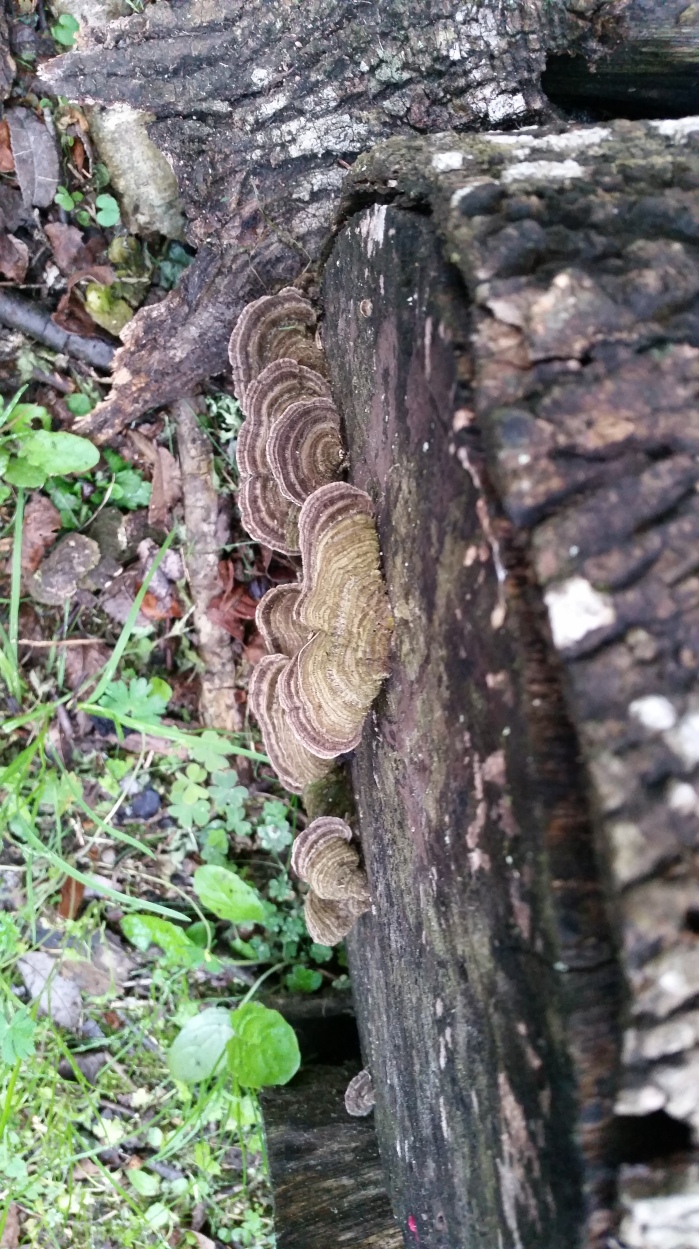

Reports indicate that there are several ways to administer this mushroom. According to those reports, you can chew the mushroom like gum (which sounds pretty God awful), chop it up and boil it in water for an hour or more to make a tea to which can be added things to flavor the tea. There are also supplements available with powdered mushrooms in capsule form. If I were to consume this as a medicine, I’d probably go the tea route to insure that I boiled off any nasty things clinging to the mushroom, and to insure that I might get rid of any non beneficial toxins that might be contained therein. When I spotted this little guy, I was tempted to make myself up some tea to ward off the flu devils!
AS WITH ANY OF THE INFORMATION CONTAINED ON THIS WEBSITE, DO NOT USE THIS INFORMATION FOR IDENTIFICATION OF ANY WILD PLANT OR OTHER MATERIAL. IT IS FOR ENTERTAINMENT PURPOSES ONLY, AND YOU SHOULD CONSULT WITH A QUALIFIED MYCOLOGIST BEFORE YOU CONSUME ANY PART OF A MUSHROOM COLLECTED IN THE WILD. A MISTAKE CAN BE FATAL. DON’T BE A MORON.
DON’T CONSUME ANYTHING TO TREAT THE BODY IN ANY WAY WITHOUT FIRST CONSULTING WITH A PHYSICIAN. AGAIN, DON’T BE A MORON.
Boiling turkey tails actually destroys many of the compounds that are considered medicinal. Simmering is the way to go.
LikeLike
I stand corrected!
LikeLike